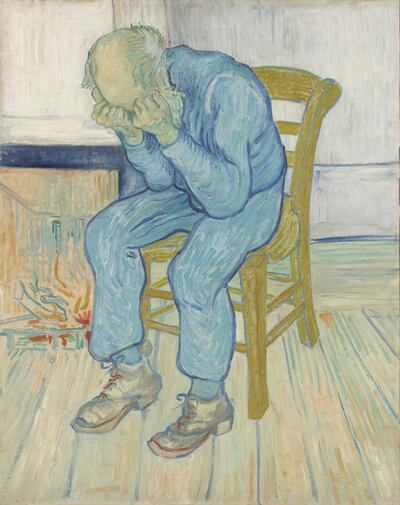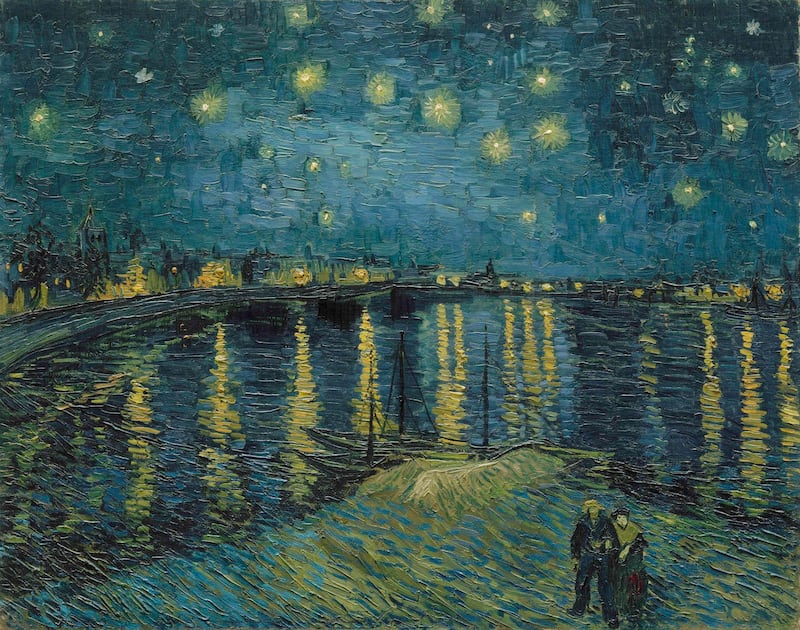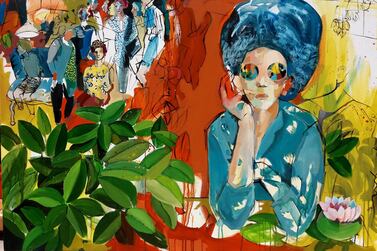It is by no means the most celebrated part of Vincent van Gogh's forensically examined life story, but as an impressionable young man, he lived in and fell in love with London. For two years from the age of 20, he worked for an art dealer and immersed himself in the city's galleries and auction houses, and even though he was not yet a full-time artist, he sketched intricate drawings of churches and tree-lined paths in his letters home. When he was fired, he briefly tried teaching and religious preaching as careers, before leaving Britain.
While his time in France and his obsession with Japanese prints is well known, the central conceit of Tate Britain's major summer show is the little-known British influence on his work – both directly artistic and broadly atmospheric. Featuring more than 50 of his pieces, borrowed from galleries and private collectors across the world, Van Gogh and Britain marks the biggest exhibition of the artist's work in the country for a decade.
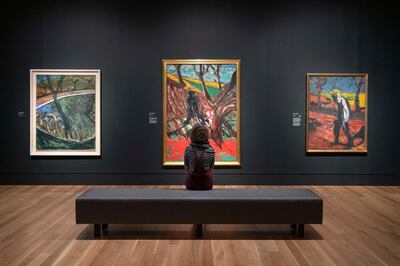
A young artist in London
These formative years were where certain ideas – visual and otherwise – first captivated him. The Tate has placed Van Gogh's work alongside that of his influences, for example Meindert Hobbema's Avenue at Middelharnis and John Everett Millais's breathtaking Chill October, both of which Van Gogh loved – he even met Millais in the street in London once. It's these that set in train some of his thinking about autumn, death and memory. His Autumn Landscape at Dusk is especially haunting, and the connection to these Hobema and Millais paintings, along with the poems of the British poet John Keats, is evident. Nature, he wrote to his brother Theo, is "more serious and intimate" in autumn.
Many of Van Gogh's humanitarian ideals were forged while living in London, too, both from his surroundings and his warm embrace of British literature – John Bunyan's The Pilgrim's Progress and the works of Charles Dickens, whom he adored. The influence of Gustave Dore's gritty and unflinching prints of London, a city beset by poverty, smog and miserable slum-life, are also vividly clear – he admired their "resolute honesty" and would hang them in his studio years later. He would remain greatly moved by the plight of society's most downtrodden, collecting prints of soup kitchens and later, in The Hague, drawing some sketches of them of himself.
While those connections are clearly articulated, at times, the exhibition's conceit feels somewhat tenuous. Though some of Van Gogh's thought-processes about life and art were triggered in Britain, many of his influences came from elsewhere, and his phenomenal body of work was entirely produced in, and largely inspired by, his French and Dutch predecessors, peers and surroundings.
The rise of a Van Gogh industrial-complex
When the exhibition turns to Van Gogh’s influence on British artists of the early 20th century, as his fame soared after his suicide in 1890, it becomes rather flat. It’s hard to imagine many visitors will care about the Tate’s historic role in exhibiting his work, yet this receives an entire room.
That said, it is important to understand the great Dutchman's colossal impact on 20th-century art, and the rise of a "Van Gogh industrial-complex" that sometimes feels out of control. It's just a peculiar irony that this exhibition is also feeding into, and capitalising on, the same commodification of art that Van Gogh so disapproved of while alive. In fact, it was precisely one such moral stand – and a subsequent disagreement with his bosses – that got him fired from the art dealership in London.
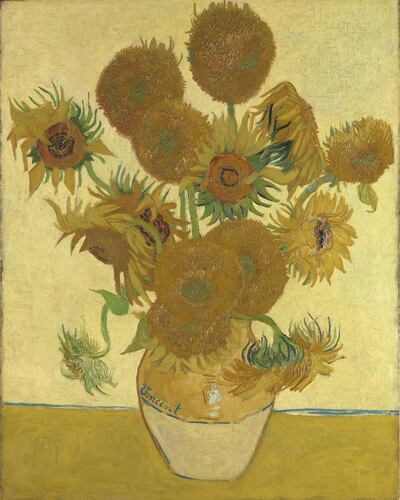
Certainly it is not Van Gogh's fault that his Sunflowers (fourth version) is really the epitome of art-as-commercial-meme, but its over-familiarity does make it strangely boring to see firsthand. It is appropriate, perhaps, that when entering the room where it is displayed, a mother is directing her three children to stand next to it for a family photo, as if lined up in front of the Leaning Tower of Pisa. As the crowd jostle to get their smartphones symmetrically aligned in front of the most omnipresent pieces, such as Starry Night Over the Rhone, it's tempting to roll your eyes. But that's also because, again, the connection between this piece and Britain is extremely tenuous – we are told Van Gogh liked to walk along the river Thames in London. So what?
Maybe this is curmudgeonly. Perhaps the flurry of smartphones in front of world-famous paintings isn't so bad – our connections to works of art should be social, as well as intimate or personal, and the way a painting is enjoyed varies from one person to the next. But in the case of his Sunflowers, it doesn't help that it's situated as if on a throne in the middle of its room, ringed by a collection of frankly underwhelming still life paintings of flowers by British artists. The point is to show Van Gogh's influence on the British painters who followed in the early 20th century, but the effect is uninspiring.
But it also feels a shame to carp, when presented with some of the many masterpieces from Van Gogh's last few years, painting in oils in the bold, expressive style he developed in Arles in the south of France, the work he would become world-renowned for. On Horse Chestnut Tree in Blossom, the movement is staggering, the tree branches seeming to flail like a multi-limbed monster, the confident dabs of contrasting colour in the leaves jumping from the canvas, and the ground seeming to rush out from beneath your feet.
The artist's darkest days
As his mental health deteriorated, Van Gogh moved to the Saint-Paul Asylum in Saint-Remy-de-Provence, and his work from this period is profoundly moving. He painted scenes from the asylum extensively, and it is one of these paintings, Path in the Garden of the Asylum, which most surprises me. Its tragic context is belied by its dynamism, the vivid autumnal reds and yellows drawing the eye to a small, isolated and melancholy figure in blue, reclining in the background.
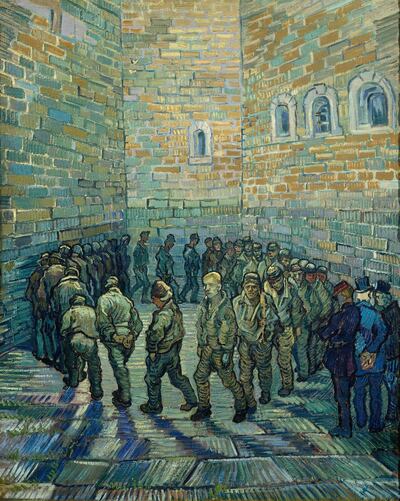
Some of Van Gogh's transmissions of despair through his brushwork were less subtle, though no less powerful. The anguish of the bent-double figure, Sorrowing Old Man (At Eternity's Gate) is greatly affecting, as is the claustrophobic drudgery of Prisoners Exercising, as they drag themselves, hunched and layered against the cold, around the prison yard. It is a true revelation to see just how bold some of these famous works really are; to see the delicacy and care of every blue brushstroke around the eyes and in the hair in his self-portraits. It's also a reminder that no reproduction – on a mouse-mat, or a pencil case, or an iPhone cover – will ever match up to them.
